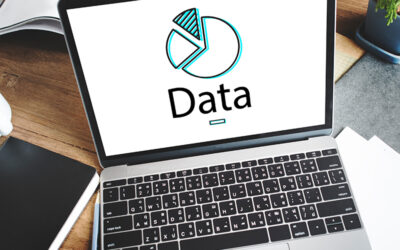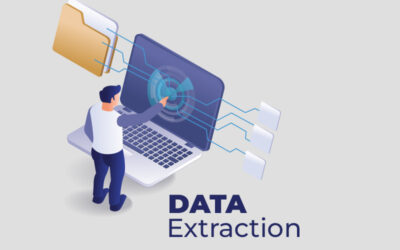Massive amounts of real-time data are being generated, and many firms are unsure of what to do with it all. An organization cannot do anything until their data is transformed into useful insights. Outdated data models are no longer useful for processing large amounts of data to gain insights. It’s critical to transform this vast volume of data into useful insights so that businesses can make better decisions.
Processed data analysis and decision-making produce actionable insights. It can motivate a course of action, particularly those that force you to reconsider something and move in a different path. In order to transform data into actionable insights and adopt the data-driven paradigm in business, many organizations now turn to data conversion outsourcing.
What Is Big Data and Why is it Important?
Big data is a term used to describe the collection of organized, semi-structured, and unstructured information by businesses that may be utilized for predictive modeling, machine learning, and other advanced analytics applications. The need to comprehend trends, preferences, and patterns in the massive database created when users interact with various systems gave rise to the idea of big data. Business enterprises can employ analytics to identify their most valued clients by utilizing Big Data. It can also assist companies in developing novel experiences, offerings, and services.
Big data offers useful consumer insights that businesses may utilize to improve their marketing, promotions, and advertising in an effort to boost customer engagement and conversion rates. By analyzing data, both historical and current, companies can better understand how consumer preferences are changing and adapt to the demands and desires of their customers.
These days, businesses are concentrating on modernizing their data architecture, combining data, and getting rid of outdated technologies. Big data has a significant impact on businesses because it makes it easier for them to manage vast amounts of data effectively. According to Grand View Research Inc.’s figures, the big data market is anticipated to grow to a value of USD 123.23 billion by 2025.
Strategies to Turn Your Big Data into Valuable Insights
- Understand Your Long-Term Goals: Don’t let the conventional methods restrict your progress or the insights you can acquire. Make a clean start, free of unnecessary baggage from the past, and be open to learning new skills. But having a well-defined long-term plan for your company is equally essential. You can’t choose the right hardware and software for your business if you don’t know what you want it to look like in the end.
Big data is processed using artificial intelligence techniques but it does not mean that any such software will work. It also doesn’t imply that a full system overhaul requires financial investment for adoption throughout the entire organization. These are all added on after you determine the appropriate goals your company should set for the next five years. Decide on a concrete goal and begin constructing the means to achieve it instead of setting too many goals and concentrating on the most crucial ones.
- Determine the elements that will take you to the required objective: Now that you are aware of your goals, it’s important to pinpoint the elements that will enable you to attain the desired outcomes. It is among the most challenging steps in the procedure.
If something went wrong here, your entire strategy would be flawed. For example, you need to know what factors will enable you to improve your consumer base by 10%. Is it better to focus on current markets or expand into new ones? Is it OK to target a different audience? If so, what adjustments to the marketing plan are necessary to draw new customers?
- Identify the patterns: You can convert data into knowledge by identifying patterns. A set of lines connecting certain price points at a certain period can be used to spot trends. It’s important to understand, though, that not every pattern will apply to you. You need to carefully consider every possible consequence of the identified patterns and determine whether they provide a precise response to the issues posed.
- Ask relevant questions: Make every effort to respond to queries from stakeholders. This can entail investigating their goals and difficulties. But it’s simple to lose hours researching data and even discover insights that are unimportant or irrelevant for your company’s objectives. To obtain pertinent responses, you must pose the appropriate questions. It is necessary to formulate specific questions prior to moving on to the data analysis phase.
- Segmentation can motivate positive activity: If you wish to act on your data, segmentation is crucial. You might begin your investigation by grouping data that share a characteristic, like customers with comparable schedules or consumption patterns. Next, based on the issue or questions you wish to address, you will select the category you wish to study. Through customer segmentation, you may gain a better understanding of customer behavior and patterns by identifying each category and giving it a distinct identity. You can create an optimization plan with the use of this information.
- Transform data into measurable indicators: You can transform unstructured data into quantifiable measurements by eliminating redundant and duplicate information and organizing it according to a common framework. Data in distinct data sets can be arranged using meta tags and categories. Metrics can be established to evaluate how the target is being influenced by the factors by using performance scorecards. Presenting all of the facts in an understandable style is essential. Not every worker in the company has the technical understanding necessary. Furthermore, you cannot expect staff members to read through numerous pages of study before making a choice.
- To effectively communicate your point, use clear visuals: The way your data is presented can have a big impact on the result. It’s similar to having two presentations: one with plain visuals and figures, and another with both. Which one, in your opinion, is easier to understand and makes more sense? It is imperative that you clearly communicate each data story and all of its supporting details. Add the why, the how, and the what. When required, you should even employ charts and other diagrammatic visuals to drive home the point. Your data will be transformed into insightful knowledge through this method.
- Make choices and follow through on them: After you’ve determined what steps are necessary to gain an advantage over your rivals, it’s time to implement your strategies. For instance, you should provide the groundwork to lower pricing and advertise the offer ahead of time if you think that giving a product a discount during a specific time will increase sales. Your intended audience ought to be aware of the intriguing things you have to offer. By bringing everything into harmony, you may use big data to extract intelligence that can be put to use in order to grow your clientele.
Businesses need to use big data technology in order to grow and thrive in today’s cutthroat marketplace. Adopting the data-driven model is essential to the digital transformation process in order to make decisions more quickly and effectively on the basis of trustworthy insights.
In order to locate data sources, combine them, and gather the data in one location for additional processing, you should consider data conversion outsourcing. To assist analytics in producing actionable intelligence, you need automated processes for data collection, cleaning, formatting, and categorization.




